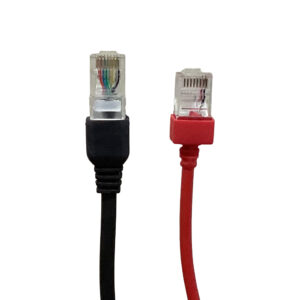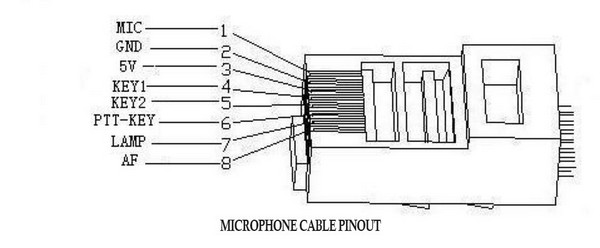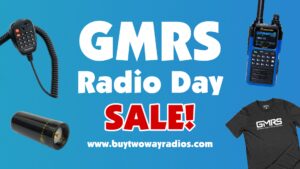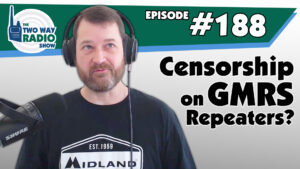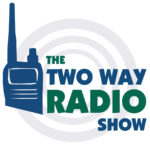- Home
- Business Radios
- Consumer Radios
- Accessories
- Antennas
- Antenna Analyzers
- Audio Accessories
- Batteries
- Belt Clips
- Bundles and Kits
- Cases and Holsters
- Chargers
- Coaxial Cable
- DC Power Accessories
- DC Power Supplies
- Dummy Loads
- Duplexers
- Faraday Bags
- Miscellaneous Accessories
- Mounts
- Power SWR Meters
- Programming Cables and Software
- Replacement Parts
- Solar
- Test Equipment
- By Radio Type
- By Radio Brand
- Services
- Other Products
- Buyer's Guide
- Resources
Compare (0)
You have no items to compare.
Same Day Shipping! Orders placed before 5 p.m. EST ship same day!
GMRS
General Mobile Radio Service (GMRS) Radios
-
Ham vs. GMRS | TWRS-190 Podcast Video
Recently we posted an article in our blog in response to a discussion in the Two Way Radio Forum comparing the amateur radio service to the GMRS. The original poster in the forum provided a short but interesting take as to why he thought ham radio was the better option. The reasoning put forth was based simply on the fact that while both were governed by rules set forth by the FCC, ham radio had more spectrum allocated to it than GMRS.
In this full video edition of the award nominated The Two Way Radio Show Podcast, Danny and Rick discuss the pros and cons of both the Amateur and GMRS radio services and which one they think is better. We’ll also take some of your comments and questions from our blog and our Two Way Radio Forum.
Listen to the audio only version of this episode and Subscribe to the show!
Want more videos about 2-way radios? Browse our video blog and subscribe to our YouTube channel and Rumble channel!
-
Radio 101 - What is a GMRS Radio?
If you need a UHF radio for general purpose use with greater power, range and versatility than FRS, consider the GMRS. But what is GMRS?
In this episode of Radio 101, Tommy explains what a GMRS two way radio is and the advantages of using one. Check out our complete selection of GMRS radios!
-
Microphone and data cable pinouts for the Wouxun KG-1000G
 The Wouxun KG-1000G Plus is the most popular GMRS mobile radio we sell, so we receive a lot a technical questions related to it. Not surprisingly, one of them is about the microphone and data ports. What are the specific pin assignments of these ports or jacks?
The Wouxun KG-1000G Plus is the most popular GMRS mobile radio we sell, so we receive a lot a technical questions related to it. Not surprisingly, one of them is about the microphone and data ports. What are the specific pin assignments of these ports or jacks?There two RJ45 ports for the Wouxun KG-1000G. One is for the hand speaker microphone that plugs into the right side of the front display panel, and the other is for the data port on the left side of the unit that the PCO-003 programming cable plugs into.
Here are the microphone and data cable pinouts for the Wouxun KG-1000G and KG-1000G Plus The pinouts are the same for both models.
Questions? Comments? Leave them in the comment box below!
-
Why Wouxun GMRS radios do not include programming cables and software
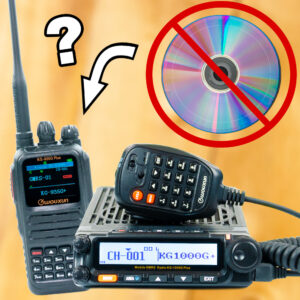 We get this question from customers who receive their new Wouxun GMRS radio, open the box and presumably find two items missing from the package. They immediately call us to complain that these items are not included and want to know why. The items in question are a programming cable, and programming software. "Why is there no programming cable?", they ask. "Why is there no programming software included in the box with which to program the radio?" "How can I use it at all when it can't even be programmed?" Good questions.
We get this question from customers who receive their new Wouxun GMRS radio, open the box and presumably find two items missing from the package. They immediately call us to complain that these items are not included and want to know why. The items in question are a programming cable, and programming software. "Why is there no programming cable?", they ask. "Why is there no programming software included in the box with which to program the radio?" "How can I use it at all when it can't even be programmed?" Good questions.The answer is simple. Although these radios are PC programmable, the programming software isn't needed to program them. These aren't ham radios. They are GMRS transceivers. The radios are already pre-programmed to operate on the GMRS right out of the box.
The need to program a GMRS radio from a computer is a myth
There is a myth that seems be growing with religious fervor among GMRS operators, particularly those who are brand new to the service, that a GMRS radio requires a lot of complicated configuration by the end user in order to get it to work on the air. We could speculate on the reasons for this. It could be due to the influx of amateur operators getting into GMRS who are accustomed to customizing their ham radios this way. This is because hams have numerous bands and frequencies available to them, which means the ham radios do need to be custom programmed to the specific frequencies that need to be used.Another possibility is that GMRS newbies, hearing that hams have to program their radios to work, figure it's the same prerequisite with the GMRS. A third consideration is that they want to max out the capabilities of their radios right away, or before even inspecting the radio to find out if what they want it to do is already activated or configured into them by default. Yet another is the assumption that such customization is next to impossible to perform from the radio itself, at least without great difficulty and time.
This last assumption is very likely based on past experience with attempting to program a radio such as the legendary Baofeng UV-5R, and assumes that every radio is just as complicated. The UV-5R is a very poor example from which to make that assumption for two reasons. First, this cheaply priced little handheld is also cheaply designed, so it is kind of a confusing and convoluted piece of tech for field programming. Second, the UV-5R was not designed nor was it FCC type accepted for use as a GMRS radio in the first place, so there was nothing specific for that service programmed into it from the factory.
So, there are reasons why there is a myth that GMRS radios must be programmed by the end user before they will work at all. It doesn't matter the reason, really. It's just a myth. The fact is, none of those assumptions actually hinder or prevent the radio from transmitting or receiving on the GMRS at all. They only get in the way of the ease and enjoyment of its actual operation.
To fully appreciate why this whole argument of programming a GMRS radio is even a thing and why GMRS operators, particularly "hobbyists" (it's actually a utility service) are so adamant about having the cables and programming software to do it, we must first understand when, where and how it all began.
The history of the programmable GMRS radio
The truth is, this history is a short one. The phenomenon of the PC programmable GMRS radio only occurred within the last few years.Until the Part 95 rule change in 2017, GMRS radios were nearly all hybrid FRS/GMRS models marketed and sold as pairs in "bubble packs". The antennas were non-removeable, they were fairly low wattage, and only a few of them supported repeaters, with no split tone capability, either. Although many of these simple radios were configurable from a menu accessed from the keys of the units themselves, that was the full extent of their customization. None of them were PC programmable by the end user.
There were less than a handful of radios that were FCC type accepted as GMRS alone, and the very few that were had both limitations on the service and a high price tag that kept them from wide distribution and adoption. Those were the only legitimate options for the hardcore GMRS power user.
In addition, although the GMRS service allowed for mobile and base station radios, no official Part 95 models for these categories actually existed. They were all commandeered from business models under the pretense that a Part 90 radio that met Part 95 requirements could technically be used for GMRS as well. This use of business radios for GMRS was a hotly debated topic at the time, and in some circles, it still is. In a nutshell, all the officially FCC approved GMRS radios were handhelds.
Then along came Midland.
Midland took the first of two big, bold moves to change that somewhat in April 2011, when the company launched the GXT5000 handheld radio, and Buy Two Way Radios was one of the first retailers to offer it. Although professional grade and a big step up from the hybrid bubble packs, There were still limitations. the antenna was permanently attached and it did not support repeaters. Nevertheless, the GXT5000 was met with great enthusiasm from the GMRS crowd, and the radio sold very well, that is, while it was available to buy. Unfortunately, due to long production delays after its initial release and a disaster at the manufacturing plant two years later, this iconic radio was put on a long hiatus and eventually discontinued altogether.
Then in 2015, Midland released the first bona fide GMRS mobile in the form of a micromobile, the Midland MXT100. We were the first to carry that one as well. Two years later came a second wave of Midland mobile radios, and this time there were three. The MXT105 was an upgrade to the original MXT100. The MXT115 and the MXT400 did support repeater operation. Both the MXT105 and MXT115 are still on the market today. Except for the MXT400, which provided for it later, None of them were originally intended to be PC programmable by the end user.
Aside from Midland, that was about it. All of the other big brand manufacturers of consumer radios, including Cobra, Motorola, Icom, and Uniden all but ignored GMRS as a stand alone service, completely shunning its full potential. Dedicated, licensed GMRS operators had no where else to go.
The FCC Part 95 rule change in 2017 changed all that. Once the FRS and GMRS hybrids were separated, and the rules redefined, the possibilities for creating a new wave of GMRS radios that maximized the service had finally arrived. But would manufacturers step up to the plate and take a chance?
At first, not so much. Realizing the full market potential of this change, and based on the interests of our customers at the time, we approached several manufacturers about the possibility of developing at least one portable handheld GMRS radio that would meet the desires and needs of our customers. It needed to be a full 5 watts, have a removeable antenna, be built rugged for professional use, and fully support repeaters.
And then, a company did it.
On December 12, 2019, Wouxun released the KG-805G Professional GMRS Two Way Radio. It checked off all those boxes, and in doing so, opened up to the door to new possibilities for both the business and family utilitarian, and the dedicated power user, known today as the hobbyist.
But there was one more advantage to this legal GMRS radio. The KG-805G was PC programmable by the end user.
The radio was a huge hit right off the bat. It was so popular that Wouxun followed up a year later with the KG-905G. It was also a big seller, and still is today. The competition quickly took notice, and it wasn't long before other manufacturers, almost all of them from overseas, began to manufacture and market GMRS radios of their own. And nearly all of them user programmable from a CPS.
But do they really need to be?
This is an interesting question, and one that many GMRS power users who now call themselves hobbyists may answer with a resounding cry of "Yes, of course (and what a stupid question)"!
The real answer is, not necessarily. The simple truth is that it depends on why you are using the GMRS service, and what you intend to do with your GMRS radio.
If you are using the GMRS service as a general purpose utility, which is what the FCC intended in the first place by naming it the General Mobile Radio Service, the answer is quite simply NO. If you are using an Wouxun GMRS radio for that purpose, the answer is an even more emphatic NO!
This doesn't just apply to Wouxun radios, either, but every radio made that is officially FCC type accepted to legally operate on The General Mobile Radio Service.
However, Wouxun has made their GMRS radios easy to program, so easy, in fact, that all of them - even the mobile radios - can be field programmed straight from the radio itself, without any programming cable or CPS app needed.
This is because every Wouxun GMRS radio we carry at Buy Two Way Radios is designed from the inside out to be Transceive Ready right out of the box, as soon as you turn it on. They are all intended to be easy to use, and very easy to customize right from the radio itself, with easy to navigate menus that are sensibly laid out in organized, logical structures, easy to read menu functions whose labels are easy to understand, and an owner's manual written in plain, native English with simple explanations and instructions that are easy to read and comprehend.
Of course, if you want to program it from a PC, Wouxun does provide both a programming cable and programming software for that purpose, and in a few instances, certain advanced functions may need to be configured that way. But it's not necessary for most customizations.
Sure, there are a few exceptions. Some advanced features on certain models, such as Scan Group assignments, customizable color display themes in the KG-935G Plus and KG-Q10G, and DTMF functions, do require access to programming software. Those features may well be of interest to the hobby user. But even then, based on our experience with customers so far, very few hobbyists go that deep into the color themes on the radios that support them, and even fewer do anything with DTMF.
Fine, you ask, but what about all those available channels? Some radios have 99, some have a few hundred, and a few have nearly a thousand channels to program. Don't they all need to be filled?
Do they? Really? Why?
How many channels must be programmed into the radio?
This is not ham radio we're talking about here, it's GMRS. Unlike the Amateur radio service, which covers a huge swath of frequencies across well over a dozen bands, GMRS is limited to only 22 simplex and 8 repeater channels in one narrow spectrum of the one UHF band. 30 channels. That's it. Technically speaking, those 30 channels that are already pre-programmed into the radio are all you really need to transmit anywhere on the GMRS in the USA. So what are all of the extra programmable channels for?They are there for the convenience of customizing those existing 30 channels with CTCSS tones, DCS codes and other features that enhance the GMRS experience without having to constantly reconfigure the original channels with new customized settings every time a modification is needed.
Now, you could say that in the case of repeaters, you would want to be able to connect to a repeater that is using RPT channel 16 and a CTCSS tone of 67.0 in one locality and program a new channel with the same RPT 16 frequencies and a CTCSS tone of 254.1 to a repeater in a different locality.
Or perhaps you want to transmit on simplex channel 7 at five watts for certain activities and on the same frequency for that channel at a lower power for something else. Instead of constantly changing the settings every time you need to do so, you can customize these channels by assigning additional instances of them to a new channel. This is a practical way to go.
Where this gets a little over the top is when a user wants to program all the extra channels for every repeater in the country. While this can be very useful for someone on a cross-country road trip or a trucker going from one coastal city to the other, for most users, 400 channels is going to be overkill for everyday use of a GMRS radio. You don't have to fill the radio with channels you'll never use. But they're there, if you really need them.
And yes, some operators want to be able to scan any and all RX only frequencies that some radios may support, and add customized channels for them, as well.
Even so, Wouxun GMRS radios are designed to be field programmable, so you can quickly and easily add new channels right from the radio, without any programming software. Most models allow you to clone existing channels and assign them to new ones with full customization, including channel names. And two models have a revolutionary feature that allows you to program these new channels, directly from the radio, in mere seconds.
Channel Wizard
The KG-935G Plus and KG-Q10G have an amazing tool called Channel Wizard. Built right into the menu of the radio, the Channel Wizard walks you through the process of programming a channel in simple steps. There is no need to surf through the manual or, as is the case with the old, clunky (and not legal for GMRS) Baofeng UV-5R, watch a youtube video to figure out what to do next or how get there to do it. The Channel Wizard allows you to quickly and easily program a new channel or modify an existing channel directly from the keypad of the radio itself. With the Channel Wizard, you can add or clone new channels into the radio in mere seconds. You can also change the settings in any existing channel. The wizard lets you do all of this without scrolling through the menu to find and set each individual channel option, and without the need for any programming software.Some users have reported the ability to program multiple channels at a time via the Channel Wizard to be faster than programming them through a CPS.
So, why don't Wouxun GMRS radios include the programming cable and software?
Even so, in spite of all the Transceive Ready capability and field programmability that Wouxun builds into their radios, you may still be adamant that these Wouxun radios must be programmed via computer in order for you to operate it. Well, even if that's true, and it isn't, there are two more compelling reasons why they don't come with the programming cable and software, nor should they. The first is a combination of practicality and cost.Wouxun radios are high end, high quality products. With that comes a premium cost. The inclusion of a programming cable is part of that cost. We have found that too many of our customers who regularly buy GMRS radios from us don't actually need a cable because they already have one, either the famously standard Wouxun PCO-001/PCO-009 red cable, the XLT Painless Programming Cable, or some other brand. Why fill up your junk drawer with a dozen cables that you don't need? By not including a cable, we are able to keep the cost of the radio down. Save a cable, and save your wallet. There is no reason to inflate the price for everyone.
The second reason is to save frustration for both the customer and our techs. As mentioned several times already, Wouxun radios are carefully designed to be Transceive Ready. Unfortunately, too many customers who are new to GMRS radios and have been conditioned to believe The Myth will have a tendency to instinctively open the box, pull out the radio, plug in the programming cable, install (unnecessarily) the driver for it, and install the programming software - all without even opening the manual - and immediately render their cable and/or radio inoperable.
Then it's an angry call to tech support and a half hour or more on the phone to sort it all out and get the cable and/or the radio back to operating condition, with the tech often reciting instructions to the caller from the same manual included with the radio that the customer didn't read. The tragic irony is that 95% of the time, the radio needed little to no customization at all.
Ultimately, while the competition may or may not need it, Wouxun GMRS radios do not require programming from CPS to work as advertised. On the contrary, these radios are specifically designed to be used as soon as you turn them on without the need for any additional configuration, and without the need for any programming software. This includes CHIRP.
The ability to program a Wouxun GMRS radio using computer programming software isn't a requirement, it's an option. It's an optional choice for those who want to get into the weeds and further customize the radio beyond its standard capabilities. For this reason, a programming cable and programming software are considered optional accessories, and as such, are not included in the original box.
Here is a list of Wouxun PC programmable radios. Many require some or complete programming for general use.
Note: *The menu items in yellow are business radios that are programmable by the dealer only.
**The menu items in red are amateur radios and require programming software.
***The menu items in green are GMRS radios and do not require programming.
Also note that none of the models that require programming are GMRS. -
How to turn your KG-1000G Plus into a repeater
In a previous video, we showed you how to connect two Wouxun KG-1000G radios together to create a create a basic repeater. The KG-1000G Plus introduced new menu items and features that were not included in the original KG-100G. Although the procedure is basically the same for both versions, some menu items have been updated and moved, which may cause some confusion for those who try to follow the instructions in the original video tutorial.
In this updated video tutorial, Steven from our tech department at Buy Two Way Radios takes it step by step and shows you how to configure two Wouxun KG-1000G Plus radios into a repeater using an XLT GMRS duplexer.
Want more videos about 2-way radios? Browse our video blog and subscribe to our YouTube channel!
-
Our National GMRS Radio Day Sale is back for 2024 - 35 Hours Only!
NOTE: This promotion expired April 20, 2024 and is no longer available.
It's back for 2024, and only for 35 hours! Celebrate National GMRS Radio Day with specials on GMRS two way radios and accessories at Buy Two Way Radios with Promo Code: GMRS35!!The GMRS Day Sale begins at 1 PM EDT Friday, April 19, 2024 and ends at midnight EDT Saturday April 20, 2024.
- Get $20 off a Wouxun KG-XS20G Plus Mobile GMRS radio (no promo code needed for this one- discount automatically added in cart)!
- 10% off Wouxun GMRS accessories!
- 10% off Melowave Overlander and Shadow Mobile GMRS antennas!
- Get 10% off all XLT audio accessories!
- Plus get 10% off a Superhet Apparel GMRS T-shirt!
- FREE FRS/GMRS Radio Reference Card with purchase of any Wouxun GMRS radio (no promo code needed - item automatically added in cart)!!
What is National GMRS Radio Day?
On April 19th 2022, the FCC officially lowered the GMRS license application fee from a ridiculous $70 to the current and much saner $35. This was certainly a cause for celebration, and since that day, tens of thousands of radio enthusiasts rushed to the FCC website to become newly licensed GMRS operators.That same year, Buy Two Way Radios celebrated the new, lower GMRS license fee by declaring April 19 National GMRS Radio Day! We established this as an annual event to celebrate the new accessibility of the GMRS to the American public.
Why is the sale only 35 hours?
It represents the $35 cost of the license fee, which caused the sudden surge in GMRS license applications. It is estimated that during the first 35 hours after the introduction of the new fee in April 2022, the number of GMRS licenses granted by the FCC more than quadrupled over the same two day period in the previous year. For the entire week of April 19, 2021 there were 900 license grants. There were 3,875 in that same period in 2022. That's quite a surge.Celebrate GMRS Radio Day 2024 with Promo Code GMRS35 at Buy Two Way Radios!
-
Censorship on GMRS Repeaters? | TWRS-188 Podcast Video
How much power does a GMRS repeater owner have to control free speech? In an area where one GMRS repeater dominates others on a channel, does that repeater owner have the final word as to what can and can't be said on the air? Is it time for the FCC to update the rules for GMRS?
In this full video edition of the award nominated The Two Way Radio Show Podcast, we discuss the question of how much control a GMRS repeater operator can have over the use of their private repeater on a GMRS repeater channel. We’ll also take some of your comments and questions from our blog and our Two Way Radio Forum.
Listen to the audio only version of this episode and Subscribe to the show!
Want more videos about 2-way radios? Browse our video blog and subscribe to our YouTube channel and Rumble channel!
-
Is ham radio better than GMRS?
 Recently someone in our forum introduced a discussion comparing the amateur radio service to the GMRS, and provided a short but interesting take as to why he thought ham radio was the better option. The reasoning put forth was based simply on the concept that while both were governed by rules set forth by the FCC, ham radio had more spectrum allocated to it than GMRS. While it is true that GMRS is limited to only 22 simplex and 8 repeater channels, to say that ham radio is better then GMRS isn't an accurate or fair comparison at all, and here's why.
Recently someone in our forum introduced a discussion comparing the amateur radio service to the GMRS, and provided a short but interesting take as to why he thought ham radio was the better option. The reasoning put forth was based simply on the concept that while both were governed by rules set forth by the FCC, ham radio had more spectrum allocated to it than GMRS. While it is true that GMRS is limited to only 22 simplex and 8 repeater channels, to say that ham radio is better then GMRS isn't an accurate or fair comparison at all, and here's why.Both services are governed and regulated by the FCC
One observation that was brought up in the conversation was that fact that both services were established by the Federal Communications Commission and are governed according to the rules set forth in Title 47 of the United States Code of Federal Regulations (CFR). The GMRS is regulated under Part 95(E) and Amateur (ham) radio under Part 97 Subchapter D of the rules, respectively. Both of these services have rules of operation, so no difference there.Both services require a license to transmit
Another similarity between ham and GMRS is the requirement to purchase a license to operate on each service. Each license is issued a call sign, which the operator must use for identification when transmitting on the air. As of April 19, 2022 a license for either service costs $35 and is valid for ten years. There are no differences there, either. That's where the similarities end.The licenses are different
Although both ham and GMRS operators require a license, there are important differences in the way each license is acquired, and with good reason. The GMRS is a fairly simple service to use, requiring little to no actual technical knowledge for basic operation. Most of the GMRS radios available are pre-programmed out of the box or "plug-n-play", meaning that you don't really have to configure the radio on your own to get it to work.Sure, it can get technical if you are treating it as a hobby and really want to get into the nuts and bolts of antennas, feed lines and such. But the GMRS was actually intended as a utility radio service that pretty much anyone could access and use for general purposes, and it still is. Because of this, getting a GMRS license requires nothing more than filling out a form, plunking down the fee, buying an FCC approved GMRS radio, and that's about it.
Ham radio, on the other hand, is the polar opposite. Unlike GMRS, which operates only on the UHF band and a very limited number of frequencies that are, like CB radio, hard set by the FCC to pre-assigned channels, ham radio covers multiple bands across a wide area of the radio spectrum, including HF, VHF and UHF. The FCC gives Amateur radio operators a lot of latitude for operation. For instance, hams can build their own of equipment and experiment over the amateur airwaves to develop methods and technologies intended to further enhance the quality of life. The FCC recognizes ham radio as a bona fide hobby service, and it is one.
The whole experimentation part is a lot of power to place in the hands of anyone, and can make it a highly technical and potentially dangerous hobby to pursue. For this reason, someone can't just plunk down $35 and get an Amateur license. It requires one to study the technical stuff and take a test to prove an acceptable level of competency in this area.
Also, unlike GMRS, ham radio has not one, but three license levels. These are the Technician, General and Amateur Extra. Each license level requires a higher degree of study, training and expertise than the last. Each license level also grants different levels of access to the amateur radio bands. The Technician license grants you the UHF, VHF and a couple of HF bands, the General grants some additional HF bands, and the Amateur Extra grants access to all of the amateur bands available.
There is one other important difference between an amateur license and GMRS license that's definitely worth noting. A ham license is issued to an individual, and is not transferrable. The exception is a Club license, which can be issued to a ham radio club, but it is still assigned to an individual designated as the trustee of the club, and not the club as a whole.
On the other hand, a GMRS license, while issued to an individual, is also valid for that individual's entire immediate family. This includes the license holder's spouse, children, grandchildren and various other relatives. Watch our video Radio 101 - Who is Covered by a GMRS License? for details.
The services have different freedoms and limitations
As already mentioned, ham radio operators can operate on multiple bands and frequencies, and those frequencies are not assigned to any specific, FCC mandated channel numbers. The GMRS is limited to a total of 22 assigned channels, plus 8 pre-assigned repeater channels. This limitation alone gives ham radio an edge. Ham operators can also bounce those signals around to increase coverage across hundreds or thousands of miles, giving it even greater freedom of range than GMRS.Also, there are fewer limitations for ham as far as equipment is concerned. Because hams can build their own radios, those transceivers don't need to be Part 97 type accepted for use on the ham bands. What this means is that a ham can program and use, say, a business or other radio that is capable of transmitting on ham frequencies and use it without prior authorization from the FCC to do so. In contrast, a GMRS operator is required to use a GMRS radio that is Part 95 type accepted and approved by the FCC for legal use on the service.
But GMRS also has an advantage. GMRS shares the same 22 simplex channels and frequencies assigned to the Family Radio Service, or FRS. This means that a licensed GMRS operator can communicate with a license-free FRS operator, and vice-versa. This provides some flexibility and freedom for families, groups and even businesses who are using these services for short range comms that are not available to hams, as they generally only communicate with other licensed hams.
The rules for repeaters are different
Amateur and GMRS operators have another commonality. Both can extend their range through the use of repeaters. Yet the rules for using them are a bit different for each service.Obviously ham repeaters have an advantage when it comes to the number of bands and frequencies on which a repeater can operate, as well as the options for linking these repeaters together to extend that range even further.
On the other hand, GMRS repeaters have an advantage of their own. Although limited to one band, a GMRS repeater has a bit more latitude as to who can use it and how they must identify the repeater station.
Ham repeaters are limited to individually licensed ham radio operators with valid amateur radio call signs. GMRS repeaters can be used by a licensed GMRS operator and any family member of that operator who is covered by that GMRS call sign, as allowed by the repeater owner. In addition, if a GMRS repeater is only intended for private use by that license holder and the family, it does not need to transmit an ID, since the repeater station ID is the owner's own call sign and everyone on that repeater will be giving their family call sign during normal communications.
Each service has different power limits
It's no secret that ham radio has an edge when it comes to transmit power. The FCC granted the amateurs a fair amount of latitude when it comes to wattage allowances, although with a few limitations as well. It also depends somewhat on the license class. Technicians can transmit on up to 1,500 watts PEP on most VHF and UHF bands, but are limited to 200 watts PEP on HF bands. General and Extra Class operators can transmit up to 1,500 watts PEP on most bands with a few restrictions on additional bands they can access.Conversly, GMRS operators are limited to 5 watts on channels 1-7, a half watt on channels 8-14, and up to 50 watts on channels 15-22 and the repeater channels. This doesn't seem like much compared to the limits for ham radio operators, but it doesn't need to be for this service. Considering the great responsibility that comes with great power in the hands of the average GMRS family, that's a good thing.
Each service has different restrictions on permissible speech
There is one big difference between ham and GMRS that needs to be discussed, and it is an important one, because it has to do with what you can and can't say on the air.First, let's look at the similarities. Both GMRS and ham radio have rules about keeping the speech civil, clean, and above board, so to speak, and that really should go without saying. Both services have rules against advertising and "broadcasting" transmissions or messages. Scrambled messages or those coded with hidden meanings are also against the rules, unless they are standard "10" codes (or "Q" codes in ham radio).
Now here's the difference. There was a time when GMRS licenses were also granted to businesses, and as long as the license is still maintained, it is considered a grandfathered GMRS license. Technically, a GMRS radio can still be used for commercial operations if each individual working in the company or organization has their own GMRS license. Also, license-free FRS radios can be used by businesses as well as individuals. Since GMRS and FRS share the same channels, and operators on both can communicate with one another, business related activity is allowed.
This is quite the reverse with ham radio. The FCC explicitly states that ham radio cannot be used for pecuniary interest, meaning business or commercial communications are generally not allowed. This gives GMRS a huge advantage over ham radio.
Conclusion
So, is ham radio better than GMRS? Or is it the other way around?That depends on who you talk to - literally. It also depends on what you want to do with each service. For instance, there are certainly advantages to ham radio for people who want to make contacts all over the world, but not everyone wants to do this. The GMRS allows an operator to interact with license-free users on FRS, but not everyone wants to do that either. Each service has its strengths and limitations, and everyone who uses them doesn’t need them to do the same things. Each will fit one user better than another, and everyone is different.
You wouldn’t say airband is better than marine band, or FRS is better than CB, would you? These are all different services intended for different purposes, so one isn’t really better than the other. They’re just different, as intended. Such is the same with ham radio and the GMRS.
-
TWRS-188 - Censorship on GMRS Repeaters?
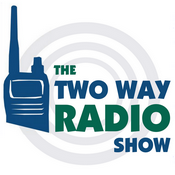
We discuss the question of how much control a GMRS repeater operator can have over the use of their private repeater on a GMRS repeater channel. We’ll also take some of your comments and questions from our blog and our forum.Intro :00
Billboard 1:09Censorship on GMRS Repeaters? 1:24
Recently I overheard an exchange on a local GMRS repeater between the owner of the repeater and a newly licensed GMRS operator who was using it. Although the new operator did not violate any of the FCC rules, he apparently did break one set by the owner of the repeater as a condition for using it. The question is, How much power does a GMRS repeater owner have to control free speech?Questions and Answers 40:00
Comments and questions from our blog and members of the Two Way Radio Forum. Check out and join the forum! It's free!Wrap up and Close 45:08
Send in your comments and questions for Danny, Anthony and Rick to show[at]buytwowayradios.com. Feedback on this and other topics will be read by the hosts and included in future episodes of the show. If we read your comment about this episode on a future episode, we may send you a free t-shirt or some swag! Visit us at www.twowayradioshow.com!© 2024 Cricket Ventures, LLC. All rights reserved.
Podcast: Play in new window | Download (Duration: 45:59 — 42.2MB) | Embed
Subscribe: Google Podcasts | Spotify | iHeartRadio | Email | TuneIn | RSS | More
-
Radio 101 - How to Add a Repeater Channel to the KG-1000G Plus
The Wouxun KG-1000G Plus GMRS mobile two way radio is pre-configured with 22 simplex and 8 GMRS repeater channels. Since it can be programmed with up to 999 total channels, you can add additional repeater channels to the radio with customized tones and codes. How do you do it?
In this episode of Radio 101, Tommy shows you how to add a repeater channel to the KG-1000G Plus directly from the radio itself.
This procedure works on the original Wouxun KG-1000G and KG-1000G Plus.







